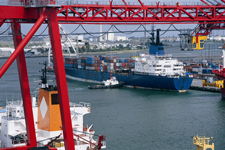
Trade Transparency Unit

ICE leads trade-based money laundering investigations. Trade-based money laundering is an alternative remittance system that allows illegal organizations the opportunity to earn, move and store proceeds disguised as legitimate trade. Value can be moved through this process by false-invoicing, over-invoicing and under-invoicing commodities that are imported or exported around the world.
Criminal and terrorist organizations frequently exploit global trade systems to move value around the world by employing complex and sometimes confusing documentation associated with legitimate trade transactions. It is estimated that annual trade-based money laundering is worth billions of dollars and is growing each year.
ICE established the Trade Transparency Unit to conduct ongoing analysis of trade data provided through partnerships with other countries' trade transparency units. One of the most effective ways to identify instances and patterns of trade-based money laundering is through the exchange and subsequent analysis of trade data for anomalies that would only be apparent by examining both sides of a trade transaction.
The unit is formed when the United States and any of its trading partners agree to exchange trade data for the purpose of comparison and analysis. Using state-of-the-art software and proven investigative techniques, the unit can easily identify previously invisible trade-based alternative remittance systems and customs fraud.
To help analyze the data, the unit has developed a specialized ICE computer system called the Data Analysis & Research for Trade Transparency System. Containing both domestic and foreign trade data, the computer system allows users to see both sides of the trade transaction, making the transaction transparent. This investigative tool was specifically designed to identify international trade anomalies and financial irregularities indicative of trade-based money laundering, customs fraud, contraband smuggling, and even tax evasion.
ICE initiated the Trade Transparency Unit concept in Washington, D.C., in 2004 and subsequently established foreign Trade Transparency Units in Argentina, Brazil, Colombia, Paraguay, Mexico and Panama.
Additionally, ICE also works with international organizations such as the Financial Action Task Force to bring awareness to this global issue.
As the network of trade transparency units grows, so will the open exchange of trade data between all participating countries. This will play an increasingly important role in thwarting money laundering and transnational crime, including international organized crime.
Red Flag Indicators
Red flag indicators of trade-based money laundering include:
- Payments to vendor made in cash by unrelated third parties,
- Payments to vendor made via wire transfers from unrelated third parties,
- Payments to vendor made via checks, bank drafts or postal money orders from unrelated third parties,
- False reporting, such as commodity misclassification, commodity over-valuation or under-valuation,
- Carousel transactions (the repeated importation and exportation of the same high-value commodity),
- Commodities being traded do not match the business involved,
- Unusual shipping routes or transshipment points,
- Packaging inconsistent with commodity or shipping method, and
- Double-invoicing.
